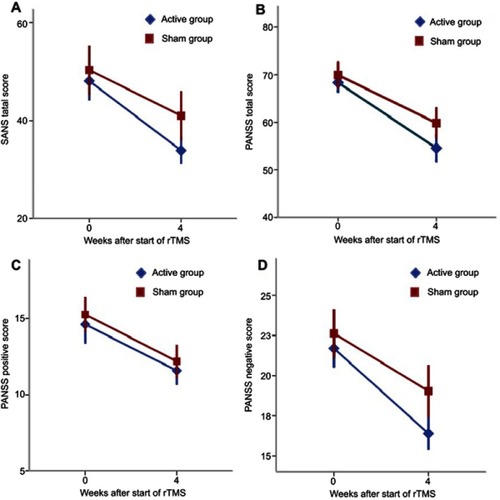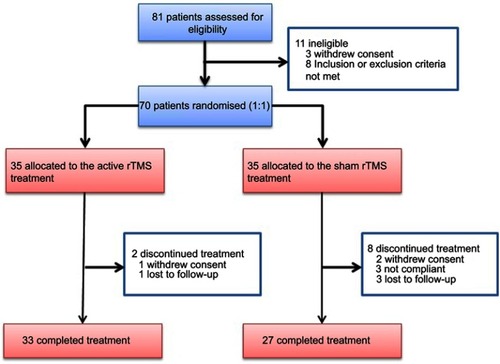Figures & data
Table 1 The demographic and clinical characteristic of the two groups
Table 2 Comparison of the symptoms changes pre- and post-treatment between the two study groups
Figure 2 Scores for severity of symptoms during the trail. Data appear mean ± SD in blue for active rTMS and in red for sham rTMS.
Notes: Patients in the active rTMS group had a great improvement in SANS total score and PANSS negative subscore after 4-week treatment (A and D). However, there were no significant differences in PANSS total score and positive subscore between the active and sham rTMS group (B and C).

Table 3 Comparison of MCCB changes pre- and post-treatment between the two study groups
Table 4 Results of the stepwise multiple regression analyses in patients

